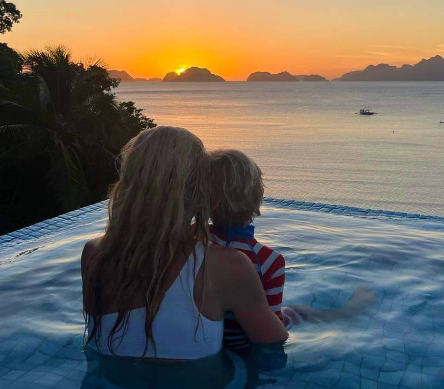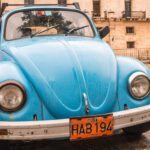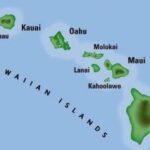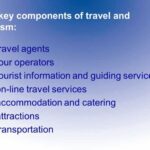How to enjoy in-the-know, safe + stress-free travels in the land down under.

Australia is one of our all time favorite destinations, especially as Eric was born in Brisbane. The stunning beaches, adventure-filled hiking trails, epic surf, rich foods and cheeky locals make it a wonderland for those who like to explore both the wonders of Mother Nature and the vibrant cultures of foreign cities. However, just like any country, there are aspects of Australia that might be confounding to tourists. To help you navigate it like a pro, here’s a heads up about the key idiosyncrasies of Aussie life.
Table of Contents
Related Content
1. There’s terminology you need to know.

While you can definitely get by with basic English in Australia, there are a few words that might throw you off. For example…
Cookies are Biscuits.
Candy is lollies.
Gas is petrol.
Trash or garbage is rubbish.
2. The conversion is (currently) super favorable for American travelers.
Before you scoff at Australian prices (which are higher than many Americans are used to) know that when a charge shows up on your credit card it will be much less than you expect. For example, a $180 charge in AUD is about $120 in USD (at least in 2019.)
3. You can’t use US dollars.

While Mexico and many Central American countries will accept USD, Australian vendors expect AUD. However, you can use credit cards, just make sure to put travel alerts on them before you depart.
4. Don’t lose your coins.
When you’re handed a fistful of change, don’t dismiss it, as Australia has $1 and $2 coins (they’re the small gold ones.)
5. Drive on the left side of the road.

You probably already know this, but we included it to ensure travelers understand how initially tricky this can be if you’re from a country that drives on the right side. If possible, spend a few days becoming comfortable with this change before doing heavy duty driving. In addition, drinking and driving is even more dangerous when you’re not used to driving on the left side, as the inebriated brain will easily shift to its go-to of driving on the right side of the road.
6. No left hand turn on a red light.
When you’re making a left hand turn in Australia it feels as though you should be able to turn on a red light, just like you often can in the United States when you’re making a right turn on red. But don’t, because it’s illegal.
7. It’s easy to get a speeding ticket, or popped for driving under the influence.

Beyond the classic method of on-the-road police handing out tickets, there are also cameras that will clock you for going too fast or too slow (we learned this the expensive way), so honor the speed limit even when there aren’t police around. In addition, vans that act as checkpoints for under-the-influence drivers are common, especially on weekend or holiday evenings. And they don’t just breathalyze, they do a cotton swab test to check for drugs.
8. Their speed limits are slower than many areas in the United States.
You’ll likely be a driving a bit slower than you’re used to, but as we mentioned above, they take speeding seriously so slow it down and enjoy the scenery.
9. They use roundabouts instead of stop lights.

Know that when you come to a roundabout yield to the cars coming from your right.
10. Be aware of toll road fees.
Many cities in Australia have toll roads, so if you’re renting a vehicle, ask the agency about their toll road protocol, as some automatically charge you, and others expect you to take care of it on your own through this government website. Fees are rarely more than $5 for the day.
11. Almost all outlets have a switch.

Helping Australians save heaps on electricity are the switches above outlets, preventing appliances from pulling electricity when they’re not needed. So if you’re wondering why your phone isn’t charging or the hair dryer isn’t working, make sure the switch is flipped.
12. You need an outlet converter if you’re from a country that doesn’t use 230 V.
As the US uses 120 V and Australia has 230 V, you’ll need to bring outlet converters. You can get 3-packs for about $6 on good ole Amazon.
Tip: A hair dryer bought in the US was made for 120 V, so you can blow out the motor by using it on high in Australia. Setting it on low or medium will likely be all you need.
13. Everything won’t kill you.
 Wallabies at Woody Heads campground
Wallabies at Woody Heads campground
While documentaries chronicling all the critters that can kill you in Aus (mainly insects, reptiles, sharks and crocs) terrify many, it’s pretty unlikely you’ll ever encounter such creatures. We went hiking numerous times and camped, and never saw one dangerous animal – kangaroos, koalas, birds, whales and dolphins were the extent of our animal encounters. Eric also spent half his life in Australia and doesn’t have any good deadly-animal-encounter stories. In addition, there aren’t bears, mountain lions or other large animals to look out for while camping and hiking.
With that said, jellyfish, spiders and snakes that can do you harm are still around, so stay aware, just not paranoid.
14. Come with your sense of humor.
Aussies are sassy and quick with the jokes, so come ready to not take yourself, or others, too seriously.
15. Portions are smaller.
While many American eateries serve heaping plates of food that could easily feed two, Australia often serves portions that are fit for a single person. It’s true that you’re getting less for more, but the quality of the ingredients is often high, and won’t require a nap and antacid after.
16. Pies are savory, not sweet.

When you see delicious looking single serving pies in one of the many Aussie bakeries, don’t expect it to be filled with apples, cherries or chocolate. A staple of the Australian culinary scene are meat pies, meaning you’ll find savory fillings like steak and mushrooms, chicken curry, vegetables and other tasty goods within that flaky crust. Don’t knock it till you try it.
17. Bring your sunscreen.
Australia has mega ultraviolet radiation and the highest level of skin cancer in the world. Because of this, sunscreen, hats, sunglasses and UPF clothing are a must.
18. You can expect comprehensive amenities at almost every public recreational space.

Showers, toilets, concession stands and even push-button grills can be found at almost every public beach and park in Australia. In addition, many of these public parks and beaches feature impressive kids’ play areas, making them ideal locales to sip your morning coffee, savor an afternoon picnic, or cook some sausage on the barby as the sun sets.
19. Visiting during the Northern Hemisphere’s summer is the way to go.
As Aussie schools have a year round system, they only have two weeks of holiday during their winter (summer in the north.) So going down under between June and August can help you score cooler weather and fewer crowds.

Sophie Turner is the adventure travel writer behind AdventureTravelFam.com. With over 10 years of experience in travel writing and a Master’s degree in Tourism Management, Sophie shares her expertise in exploring unique destinations and providing family-friendly travel tips. Follow her adventures on Instagram @adventure_travelfamily.





